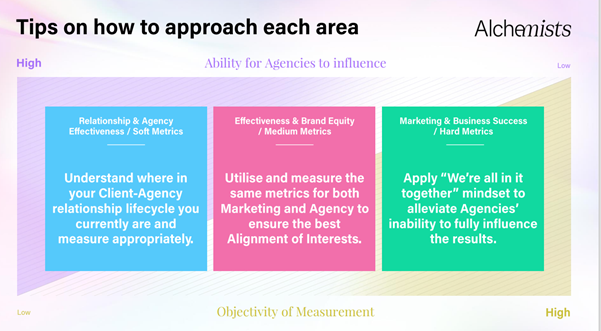Get analysis, insight & opinions from the world's top marketers.
Sign up to our newsletter.
Moving from a savings outlook to a value-creation approach requires new methods of measuring progress. Building on discussions within WFA's Sourcing Forum, Simraan Kulkarni, WFA Sourcing Manager, shares on three areas where new metrics can be used.
Project Spring is all about change. Transforming the marketing procurement function from a savings-obsessed team to partners helping to drive growth.
With 92% of marketing sourcing colleagues sharing that the way marketing procurement is viewed by their organisation could be improved – there is also a perception issue to address.
Evolving those perceptions requires a change to processes and the metrics on which sourcing is typically judged. That means building new performance KPIs that go beyond just savings and involving external partners to ensure a true perspective.
Whilst cost reduction and avoidance metrics remain important, they are not the focus for generating and measuring value contribution.
A recent webinar attended by 56 marketing procurement professionals representing multinationals including AB InBev, Abbott, Adidas, Diageo, Danone, General Mills, Heineken, Ikea, Kraft Heinz, L’Oréal, Mars, Mondelez, Nestle, Unilever and Vodafone heard from three specialists about new approaches that could aid the shift towards value creation.
Vlad Komanicky and Simon Tilden from Alchemists looked at agency performance metrics, focusing on some of the more innovative metrics that members can implement when measuring agency performance and value delivery.
They divided KPIs into three buckets. Soft metrics focusing on relationships and agency effectiveness. Medium looking at effectiveness and brand equity and hard metrics examining marketing and business success.
Alchemists advised that each of these areas need attention and that evaluation programmes need to be reviewed each year, with specific tweaks in all three areas:
 New potential metrics to demonstrate value include creative and marketing effectiveness awards, brand tracking or using tools such as MRM and DAM to gather insights and data to measure how efficiently you are operating with your agencies i.e. how fast decisions are made or how much time it takes for a particular project to deliver.
New potential metrics to demonstrate value include creative and marketing effectiveness awards, brand tracking or using tools such as MRM and DAM to gather insights and data to measure how efficiently you are operating with your agencies i.e. how fast decisions are made or how much time it takes for a particular project to deliver.
Finally, they suggest marketing procurement needs to align its personal annual performance goals with the agency/marketing performance KPIs and that marketing procurement objectives need to align with business objectives.
Mike Campbell from Ebiquity focused on the need for a clear measurement framework. He highlighted that the majority of the media plans are audience-led as opposed to being effectiveness led. There was no need for this in a data-rich world.
His view is that companies need to think about the long-term drivers of success. That means tracking a number of levers for media channels that go well beyond cost. While creative is the primary lever, the pipes we push the creative through, the channel choices, will dictate the number of consumers we engage, which ultimately defines the ROI of the media.

Simon Francis from Flock Associates pointed out that while marketing procurement, as a whole, is on a journey, different companies, sectors and regions are at different places on that journey when it comes to agency performance and appraisal.

The key to success for marketing procurement is ensuring that teams supply great scopes of work to agency partners. The foundation stone for value creation was being clear on what you expect from the agency and aligning those expectations with the agency.
When this is done correctly, the value that you get from the agency greatly improves and helps you set up a virtuous cycle of growth. Scopes of work and contracts must also be designed to capture the input, output and outcome of some of the newer issues that marketing procurement now covers such as diversity and inclusivity, sustainability and added value.

With the right scope of work and an aligned appraisal process in place, you can demonstrate the value the agency and marketing and procurement teams bring to the overall business.
There is much to be done to deliver the change in perception that Project Spring highlighted, but there is also a collective drive to continue our journey and evolve and transform. Carefully evaluating and evolving metrics to reflect the value which is right for your organisation will be a critical step on that journey.
To find out more about the WFA Sourcing Forum please reach out to Simraan.
For more information or questions, please contact us

